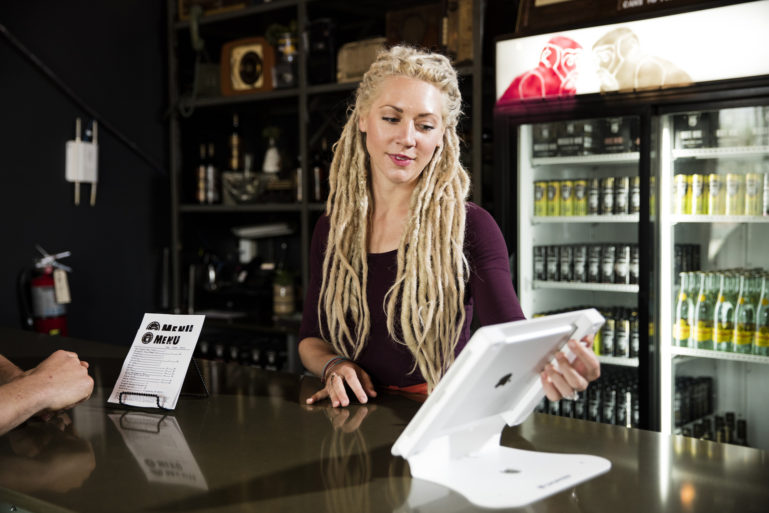Why Small Businesses Need a Dedicated Network Setup

Since you’ve opened your small business, you’ve probably heard a lot about modems, routers, and network setups.
You might be wondering why getting your network setup just right is so important. So today, we’re going to break it down for you. We’ll walk you through why having a dedicated network is so important and how you can avoid a few of the common pitfalls of small business owners.
Let’s start with the basics.
Modems, Routers, and Network Setups — Explained
So before we can launch into the intricacies of having a dedicated network setup, let’s make sure we are all on the same page. For our purposes, a network setup is the combination of settings and placement of your modem and router that allows them to work together to keep your business online and connected to the internet.
Modems are the devices that connect directly to the internet at large and are generally provided to you by your internet service provider (ISP). Routers, on the other hand, create a local network that allows internet-enabled devices (e.g. computer, iPads, mobile phones) to connect to the internet in a specific location (e.g. within the walls of your business). They also allow devices on that local network to communicate with each other.
That sounds pretty straightforward. But my ISP gave me a modem/router combo. That’s ok to use, right?
It definitely isn’t. For surfing the web at home and watching YouTube, that’s fine. But not if you are trying to run a successful business.
It’s true that modem/router combo devices have both modem and router functions, but they should only be used for home networking. Basically, there’s a big difference between the expectations of reliability you should have for a home network versus a network that you need for running your business.
What we call modem/router combos are actually known by the ISPs as internet gateways, which is to say that they are made to get your local devices to the internet. They are not made to route signals between devices. That’s why using combo devices, specifically if you are using Serverless Sync, can be so detrimental to your business’ workflow. Combo devices can also be problematic for ethernet printers and ethernet credit card readers like the iPP320.
As a ShopKeep merchant, you need devices to be able to talk to each other over their local network without relying on internet communications. This requires a router to have the internal hardware capable of routing signals not only to the internet but between connected devices. Many gateways are not built with this capability because it’s not their primary purpose. Because it’s not what they were built for, it’s likely that they will fail causing you headaches.

But what if I want to share my WiFi with my neighbor?
Please don’t. There are good and bad ways to setup your business’ network and this is one of the worst.
Sharing modems is not a good idea. Sharing routers is even worse. As stated above, modems need to be connected to wherever the ISP setup connection is located in the business. To have an ideal connection, there are certain things that have to happen, such as the modem needs to be connected via a coaxial cable or telephone line. You then need the router to be connected via an ethernet cable to the modem. If all of these things are not taking place at your business, then you have no idea what the set up is like and you have no control of when firmware is updated.
Furthermore, the more people on a WiFi network, the worse the performance will be, which can mean slower transaction speed and unhappy customers. In addition, troubleshooting won’t be available to you whenever you need it. You can’t reboot the modem if you don’t have access to it. And your neighbor won’t be able to reboot the system without kicking you off.
There are also security concerns with sharing a network, as you can expose any device currently on that network if a password is shared. Ultimately, for optimal security, all businesses should have their own dedicated networks with separate routers and separate modems.
If you need the option of providing customers with free WiFi, make sure to invest in a router that
provides a guest access feature. Because as much as you might love your customers and want to give them the best, allowing them free WiFi access on the same network that you do business on is never a good idea. Like we mentioned above, it diminishes the strength of your signal because more people will be on that network.
That all makes sense, but setting up my network sounds complicated. How am I supposed to know how to do all of this?
Actually, the most important concepts of network setup are not that complicated. Our ShopKeep Support Team has put together an amazing cheat sheet of best practices for network setup — providing you with all the details of how to get it done for your business.
We understand that configuring your network setup is one of the more complicated and technical aspects of setting up your POS system. But it’s also one of the most important. That’s why getting it right the first time around is essential. If you still have questions or need help, leave us a comment below or email [email protected].
Want to try ShopKeep for yourself?
Just answer a few easy questions.
Need help finding the right point of sale?
Just complete the form. We’ll call you right back to explain how ShopKeep can work for you.
Hit the ground running.Sprinting, in fact!
Read our free, comprehensive guide, Small Business 101, to learn all you need to know about starting a thriving business.

